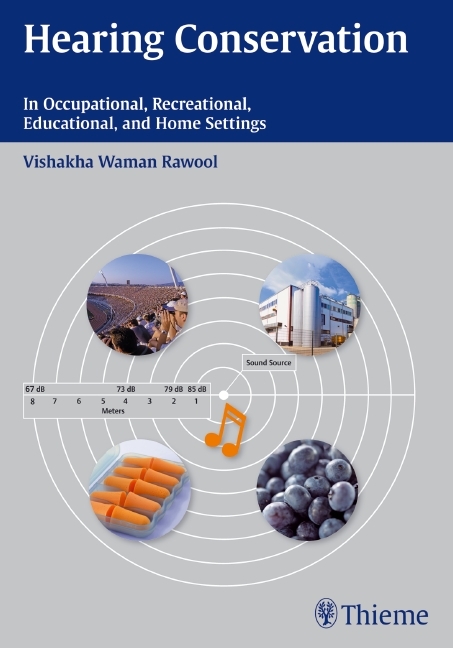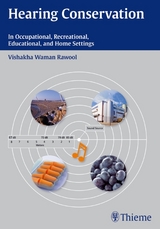Hearing Conservation
Thieme Medical Publishers Inc (Verlag)
978-1-60406-256-4 (ISBN)
According to the National Institutes of Occupational Safety and Health, approximately 30 million employees are exposed to dangerous noise levels at work and an additional nine million workers are at risk for hearing loss from other ototoxins such as metals and solvents. Millions of children and young adults are also at risk for noise-induced hearing loss in non-occupational settings.
Hearing Conservation: In Occupational, Recreational, Education, and Home Settings is the most current text to cover all major topics related to noise-induced hearing loss, including the military, construction, manufacturing, mining, transportation, the music industry, the home environment, education settings, and recreational arenas. From the underlying principles of hearing loss to audiometric testing procedures to assessment of hearing conservation programs, this book is packed with information for audiologists and other members of the interdisciplinary team who provide hearing conservation services for at-risk groups.
Special Features:
Many examples of audiometric data, that enhance understanding of all types of hearing impairment, test procedures, and standard threshold shift calculations
Protocols for comprehensive audiological, tinnitus, and auditory processing evaluations
Clinical pathways and follow-up action steps when a standard threshold shift is confirmed, including decisions about worker compensation in occupational settings
Assessment of the effectiveness of a wide range of hearing conservation programs and correction of deficiencies, along with training, educational, and motivational techniques
The most current information about hearing protection and enhancement devices, related regulations, selection and fitting, and training workers in how to use them for optimal results
Comprehensive in scope, easily accessible, and useful to both clinicians and investigators, Hearing Conservation: In Occupational, Recreational, Education, and Home Settings is essential for audiologists, occupational hearing conservationists, otolaryngologists, internists, occupational nurses, noise control engineers, and any other practitioner who plays a role in developing, implementing, and maintaining hearing conservation measures. It is also an excellent text for graduate level audiology courses in hearing conservation.
Department of Speech Pathology Audiology; West Virginia University; West Virginia; USA
Chapter 1. Introduction to Ototoxins and Hearing Conservation
Chapter 2. Documenting Hazardous Noise Levels and Exposures
Chapter 3. Noise Control
Chapter 4. Monitoring of Auditory Sensitivity and Follow-up Procedures
Chapter 5. Comprehensive Audiological, Tinnitus, and Auditory Processing Evaluations
Chapter 6. Hearing Protection and Enhancement Devices
Chapter 7. Training and Motivating Workers to Follow Hearing Conservation Procedures
Chapter 8. Evaluating and Improving the Effectiveness of Hearing Conservation Programs
Chapter 9. Conservation and Management of Hearing Loss in Musicians
Chapter 10. Noise Control and Hearing Conservation in Nonoccupational Settings
Chapter 11. Worker's Compensation for Noise-Induced Hearing Loss and Forensic Audiology
Chapter 12. Support for Workers with Noise-Induced Hearing Loss
Chapter 13. Hearing Conservation in Educational Settings
Chapter 14. Future Trends in Hearing Conservation
| Zusatzinfo | 124 Illustrations |
|---|---|
| Verlagsort | New York |
| Sprache | englisch |
| Maße | 178 x 254 mm |
| Gewicht | 816 g |
| Themenwelt | Medizin / Pharmazie ► Gesundheitsfachberufe ► Logopädie |
| Medizin / Pharmazie ► Medizinische Fachgebiete ► HNO-Heilkunde | |
| ISBN-10 | 1-60406-256-8 / 1604062568 |
| ISBN-13 | 978-1-60406-256-4 / 9781604062564 |
| Zustand | Neuware |
| Haben Sie eine Frage zum Produkt? |
aus dem Bereich




